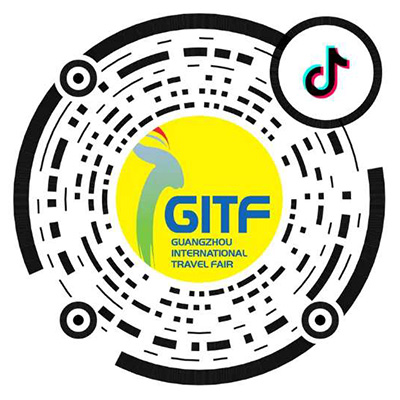
Sharing Review丨This year's International Museum Day in Guangzhou's new landmark
2024-07-11
On May 18, 2024, International Museum Day, museums became the hottest venues of the day. At the newly opened Guangzhou Art Museum, a landmark that has gained widespread popularity, the third "Let the Cultural Relics Come Alive" sharing took place. This event was specially organized by GITF2024 and co-hosted with the Guangzhou Museum Association. Museum directors and cultural heritage preservation experts from across the country gathered to discuss "The Renaissance of Cultural Relics: Innovations in Museum Education and Research." The "Let the Cultural Relics Come Alive" sharing session, now in its third year, continued to resonate, especially in our rapidly evolving technological era. On this International Museum Day, the sharing explored innovative topics in museum education and research, aligning with the latest trends in museum development and capturing the profound reflections of museum professionals.
On the day of the sharing, the atmosphere outside was bustling with activities celebrating International Museum Day and China Tourism Day at the Guangzhou main venue. Inside, the sharing featured engaging and lively discussions, showcasing the vibrant development of Guangzhou's cultural tourism sector. Discussing the future of museums within the museum setting itself provided an immersive experience. During the sharing, industry experts shared their insights on the past, present, and future of cultural heritage preservation. Ideas, strategies, and methods for revitalizing cultural relics were vividly presented through dynamic exchanges of thought.
Opening Speech
"Let the Cultural Relics Come Alive" Sharing is an Important Brand Event of Guangzhou International Travel Fair
At the beginning of the sharing, Mr. Xun Liang, Director and Senior Researcher of the Museum Department of Guangzhou Municipal Culture, Radio, Television and Tourism Bureau, delivered the opening speech. “Guangzhou is one of the first national historical and cultural cities designated by the State Council, with a millennium of heritage and a flourishing cultural legacy. In recent years, under the high attention of the municipal party committee and government, our city's museum industry has entered a stage of high-quality development. We have built and opened a number of museums showcasing the Lingnan cultural characteristics, completed the transformation and exhibition enhancement of several red-themed venues to high standards, and witnessed the emergence of numerous museums affiliated with universities, industries, and private enterprises like spring bamboo shoots after rain. Currently, there are 73 museums registered in the Guangzhou urban area, among which 7 have been recognized as first-tier museums, accounting for half of the total number in the province. The quality of museum development continues to improve." Mr. Liang further expressed, "Let the Cultural Relics Come Alive' sharing has become an important brand event of the Guangzhou International Travel Fair, embodying the integration of culture and tourism, and serving as an extension and deep integration of various fields such as 'cultural tourism +' (including technology, education, finance, industry, digitization, etc.). Through the collision of ideas during the event, it sparked innovative thinking and promotes the formation of new productive forces.”
Keynote Speech
These Inspiring Perspectives Sparked New Ideas on International Museum Day
01Sharing Topic
Continuation of Literary Heritage, Revitalizing Ancient Texts
Presenter
Dr. Daying Zhao, Head of the Classic Culture Promotion Team and Associate Research Librarian of National Library of China
Ancient texts are also a type of cultural relic. The revitalization of ancient texts aims to convey the stories told by the texts to interest individuals, enabling them to realize their contemporary significance. In recent years, the Chinese government has implemented a series of measures to protect ancient texts, such as the launch of the Chinese Ancient Texts Preservation Program in 2007 and the publication of six batches of the national catalogue of precious ancient texts. These initiatives have allowed for a comprehensive understanding of the distribution of ancient texts nationwide and have popularized the concept of ancient text preservation. Particularly noteworthy is the recent digitization of a large number of ancient texts through platforms like the Chinese Digital Ancient Texts Repository, which has significantly increased access for researchers, enhancing research efficiency and reducing barriers to entry for users. Technology-driven digitization represents a new benefit for ancient texts.
The wisdom contained within ancient texts is multifaceted. By understanding the content of these texts, we can unlock their wisdom and foster new forms of cultural inheritance and vitality. Whether through physical cultural and creative products or virtual digital technologies, these are channels and means to make ancient texts come alive. Most importantly, we must always approach ancient texts and their inheritance of Chinese history and culture with warmth and respect. Through professional interpretation, we explore the content of ancient texts, uncover traditional wisdom, and uphold aesthetic integrity, presenting the best and most elegant aspects to the audience. Simultaneously, the products we design must meet practical needs, so we enrich the stories of ancient texts and traditional culture with ever-evolving technologies to integrate them into people's daily lives. Only by integrating into daily life, in all aspects of life, including clothing, food, shelter and transportation, etc., can the contents and words recorded in ancient texts truly come alive and continue to thrive through our use, ensuring the continued inheritance of cultural heritage. We also believe that with the ongoing development of new technologies, they will continue to gain new life each day.
02Sharing Topic
Revitalizing Cultural Relics and the Social Impact of Museums
The paradigm shift towards 'Let Cultural Relics Come Alive' has propelled rapid advancements in the cultural relics industry
Presenter
Dr. Jun Wei, Researcher and PhD Supervisor of Fudan University
The cultural and museum industry has put forward the concept of 'Let Cultural Relics Come Alive' driving changes throughout the entire museum sector. These changes have led to an overall enhancement of the social impact of museums, marking the logical progression of today's topic.
The shift in the concept of 'Let Cultural Relics Come Alive' has brought about a change in thinking within the entire museum or cultural relic sector, and it has also propelled the rapid advancement of the cultural relic industry. Nowadays, it's common to hear discussions about how museums are bustling, how our industry is bustling, and how audiences are bustling. During holidays or vacations, it's often difficult to secure tickets to many museums. But what has the concept of 'Let Cultural Relics Come Alive' really brought us? On the one hand, we are very much involved in the increasing public demand for museums, and on the other hand, it also reflects how museums are becoming increasingly interactive with audiences and how their methods of serving audiences are becoming more flexible and popular among the general public.
In fact, discussions about the social impact of museums or the social effects generated by museums have been underway since the 1980s. However, in terms of research on social impact in China and abroad, we find that it is very different, which leads to a different focus on evaluating the social impact of museums at home and abroad. Overseas, society tends to focus more on outcomes, such as the effects generated by museum-related activities, while in China, more attention is paid to evaluation systems, especially those represented by the operational evaluations and rating assessments of national museums, which primarily focus on the impact on individuals.
Looking ahead, how can we expand the social impact of museums? On one hand, we need to enhance the social impact of museums. On the other hand, we can use these social impacts to guide museums on how to let cultural relics come alive.
03Sharing Topic
Cultural Creation Infuses New Vitality into Cultural Relics
Cultural creation is the creative transformation of cultural relics and serve as a vital resource within museum collections
Presenter
Haiyan Huang, Director of Guangdong Folk Art Museum
Museums serve as the supply side in the exploration of how to revitalize cultural relics to make cultural creations. However, it is equally important to consider the demand side, reflecting changes in audience or customer preferences, which has been another contributing factor to the recent surge in cultural creation over the past two years, closely related to the growing cultural demands.
Cultural creation is the creative transformation of cultural relics and serve as a vital resource within museum collections. Hence, when we engage in cultural creation at our museum, the primary objective is to achieve creative transformation, with our ancestral Chen Clan Academy as the focal point. It is crucial to emphasize this aspect. If there is an audience, there is a market. To do cultural and creative work, the audience is important, and so is the market. We place great importance on analyzing our audience. Looking back at 2023, our visitor count reached 1.88 million. Analysis of the visitor demographics for that year reveals that only 19% were from Guangdong Province, 6% from Guangzhou City, indicating that only a quarter of our visitors were locals. The remaining three-quarters came from various parts of the country, most of whom can be classified as tourists. Among them, the majority were middle-aged and young adults. Consequently, the sales of our cultural creation products were quite impressive last year, totaling over 11 million RMB, with four months surpassing 1 million RMB in sales. These four months coincided with the peak tourist season, underscoring the direct influence of tourists on our cultural creation products sales.
Market demand serves as a crucial indicator for our cultural creation development. How can we infuse vitality into cultural relics or cultural creation? Ultimately, it depends on the demands of our audience and the market. In summary, bridging the gap between cultural relics and the public requires continuous efforts to understand and enhance the connection between cultural relics and the audience.
04Sharing Topic
Exploring the European Craze for China in the 18th Century through the Dresden State Art Collections in Germany
The rich collection of porcelain reflects the historical trade between East and West during that period, bearing witness to the history of exchanges
Presenter
Shengli Xu, Chief Representative of the Saxony Tourism Board in China
Saxony is one of the 16 federal states in Germany. In Dresden, Saxony, there is the Dresden State Art Collections, which is actually a museum in Germany, with about twelve specialized collections to date. These include the Museum of East Asian Porcelain, with nearly 30,000 pieces of porcelain, half of which date back to the Ming and Qing dynasties of China. The Dresden Royal Palace is also the main venue of the State Art Collections. During its most splendid period, spanning over 800 years, the dynasty was roughly equivalent to the Kangxi and Yongzheng periods of the Qing Dynasty. Its king was Augustus II the Strong, who was extremely wealthy and had a great fondness for Chinese porcelain. As a result, he amassed a large collection of porcelain, acquiring around five to six thousand pieces, including those from Jingdezhen and Guangzhou, the capital of trade.
The National Palace Museum in China has had many years of cooperation with the Dresden State Art Collections. Over a decade ago, the two museums engaged in an exchange. The porcelain branch of the Dresden State Art Collections contains over 20,000 pieces, including more than 10,000 pieces from the Ming and Qing dynasties, reflecting the historical trade between East and West and witnessing the history of exchanges. Through the introduction of these collections, we can see, from a small perspective, how in the 18th century, Europe admired China and how Chinese art influenced the European fashion.
05Sharing Topic
Niche Academic Study and Museum Exhibitions
Nowadays, there has been a breakthrough in the exploration, academic research, and museum exhibitions of Qing Dynasty Lingnan seal script documents, which not only changes the perspective from 'regretting the scarcity of inscriptions in Lingnan' to 'delighting in the abundance of inscriptions in Lingnan'
Presenter
Dr. Dong Leng, Visiting Professor at Macau University of Science and Technology and PhD Supervisor
’To uphold trust, prevent fraud, differentiate ranks, and display elegance,’ the seal system is a value recognition of Chinese civilization and a typical symbol of social governance. Originating from commercial activities, it developed through administrative management and social culture, forming distinct yet interconnected systems. The seal system of Lingnan in the Qing Dynasty is a niche field of study with unique cultural value, high academic threshold, great research difficulty, and few researchers involved.
Shisanhang of Guangzhou was once the center of world trade and cultural exchange between China and the West. It was through Shisanhang that numerous Chinese goods and cultural elements were spread to the world, especially to Europe and America, leading to the European craze for Chinese art and significantly influencing the course of world history. In Chinese society, the most important and authoritative credential was the seal. However, we discovered that, in terms of artifacts, literature, and academic research, there was a complete void regarding the seals of Shisanhang of Guangzhou. Therefore, since 2014, we have been conducting research in this area. Over the past decade, we have visited various countries in Europe and America that had trade relations with Shisanhang and established trading houses in Guangzhou. We found numerous seal impressions preserved in original contract documents.
Building on this academic research, we are now exploring how to integrate this niche academic study with museum exhibitions. Currently, we are collaborating with the Memorial Museum of Generalissimo Sun Yat-sen's Mansion to organize the exhibition “An Exhibition of Guangzhou Port Seals from the Qing Dynasty to the Present”. We aim to implement President Xi Jinping's directive on ensuring the preservation and development of cultural heritage of significant value through the niche and specialized field of seal studies. Our goal is to create a museum exhibition that excels in cultural transmission, scientific research, and educational inspiration, showcasing our unique strengths in these areas. In summary, the excavation of Qing Dynasty Lingnan seal documents, academic research, and museum exhibitions have made groundbreaking progress, changing the perspective from 'regretting the scarcity of inscriptions in Lingnan' to 'delighting in the abundance of inscriptions in Lingnan'.
Roundtable Discussion
Fusion and Innovation of Museum Education and Research in the Digital Age
Following the captivating keynote speeches by several experts and scholars, the discussion in the roundtable reverted back to the main theme of the sharing. The guests talked about the museum's education and research tasks from several perspectives, including museum education, research and innovation. Under the moderation of Guozhao Luo, Chief Editor of Qi Pu Technology, each guest shared their views on how museum education and research could integrate and innovate.
Associate Professor of the History Department and Deputy Director of the Museum at Sun Yat-sen University, Huan Xiong, emphasized the centrality of digital and multimedia components in museums: "We aim to establish a first-class teaching system. Therefore, it's challenging to achieve this merely through traditional exhibit boards or adding artifacts. Currently, our primary approach is extensive digitization, transforming artifacts not just as treasures or collections but as teaching aids. By combining multimedia and digital technologies in this way, we are exploring new possibilities."
Xiaoqiu Zhu, Deputy Director of Guangzhou Museum, introduced that Guangzhou Museum is likely the oldest museum in South China, with a history of 95 years. In five more years, it will enter its centenary: "For a century-old museum like ours, the biggest challenge is the severe lack of physical space, making it impossible to meet the needs of a modern museum. Since we cannot expand our physical space, we have turned to virtual space." Zhu emphasized that for Guangzhou Museum, the priority is to strengthen fundamental research while also enhancing digital infrastructure.
The moderator then posed a central question: "In a museum with limited space, what can digitalization achieve?" Jun Wei, a researcher and doctoral advisor at Fudan University, believed that with current technological advancements, especially in network digital technology, there is significant potential for expanding ways to let artifacts "speak for themselves": "The two core directions of museum digitalization are improving efficiency and internal management and enhancing the interaction between audiences, exhibits, and the museum. I believe this is the key direction for future digitalization."
Dr. Daying Zhao, Group Leader of Classic Culture Promotion and Deputy Research Librarian at the National Library, added: "Content mining is also very important. Equipment is just a means and will evolve continuously, but the most important thing is what is the content ecosystem that is built. Regardless of how equipment and media change, content remains dynamic and enduring."
Xibing Yi, Director of the Guangdong Revolutionary History Museum, summarized the role of digitalization: "Digital technology provides museums with expanded development space, enhanced product supply, improved visitor experiences, elevated service levels, and increased influence." He stressed that museums, whether in the information age or the digital age, should prioritize the audience, continually improve their capabilities, and provide more products to the public. This is the ultimate goal and a higher requirement that digitalization brings to us.
In the final part of the roundtable discission, Guoshuai He, responsible for AI tourism industry at Zhipu AI, used an interesting example of how AI can plan trips to Guangzhou, demonstrating the role of technology in the tourism industry. He explained that leveraging large language models, such as planning a trip for six people to Guangzhou for four days, can quickly generate an itinerary. However, he cautioned against overestimating the capabilities of current large models and underestimating future potential, emphasizing the need for continuous evolution. Fully achieving AIization also depends on two conditions: whether the information infrastructure is sufficiently complete and whether digital capabilities are fully realized.
In any case, technological advancements can provide new momentum for the innovation of museum education and research. Museums are enthusiastically embracing digitalization, recognizing that only by meeting demand can they generate true productivity and provide museums with a better future for innovation.
Address: Room 1510, West Tower, Poly Trade Center, No.1000 Xingang East Road, Haizhu District, Guangzhou, China










